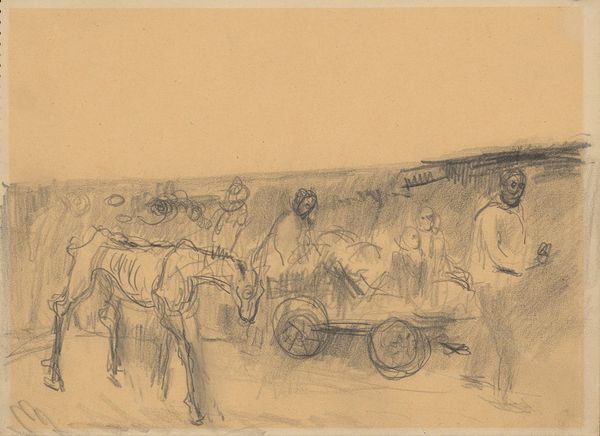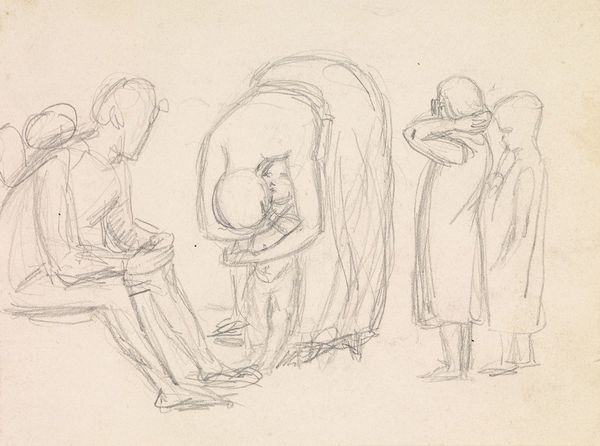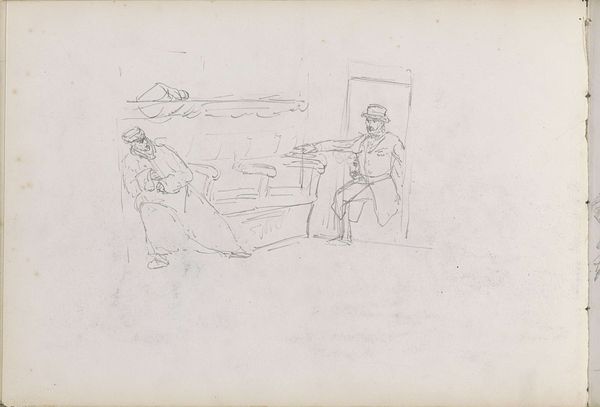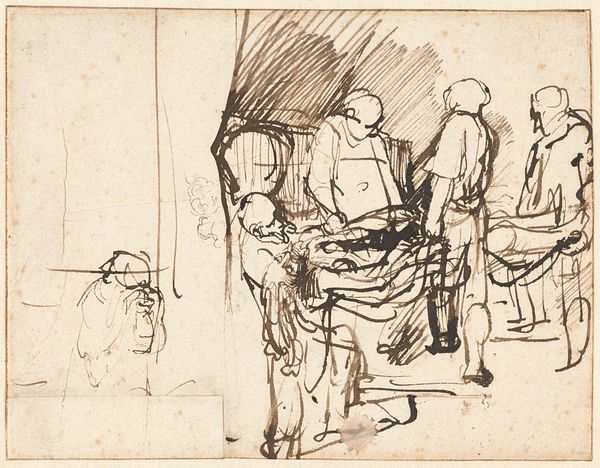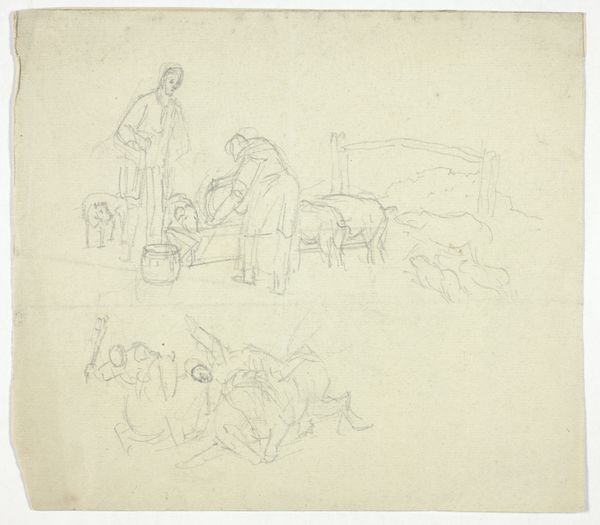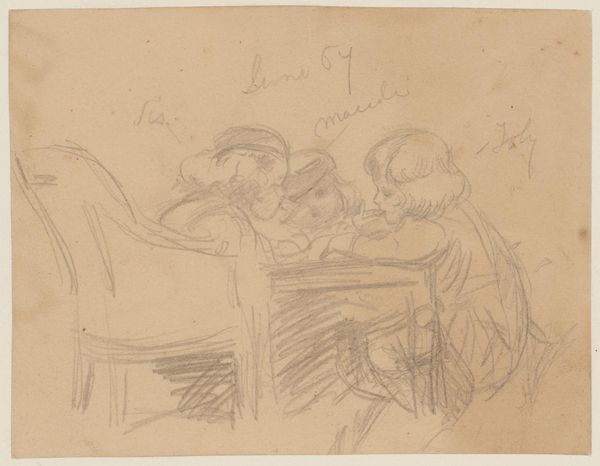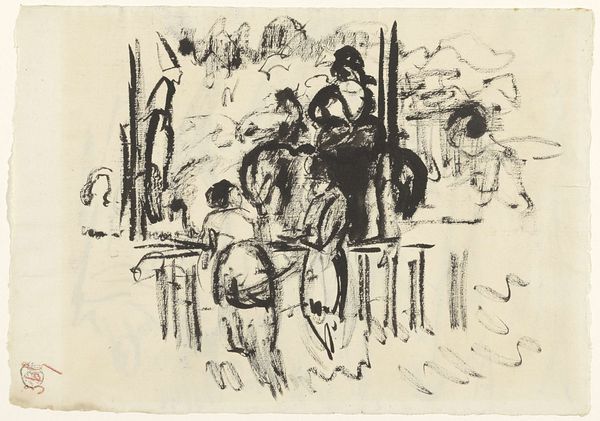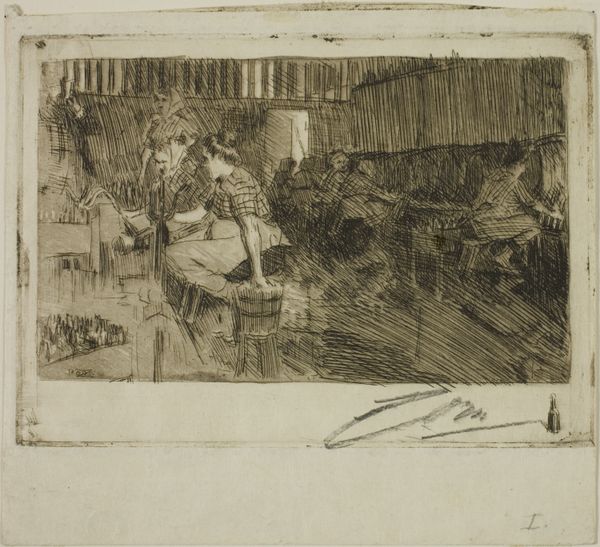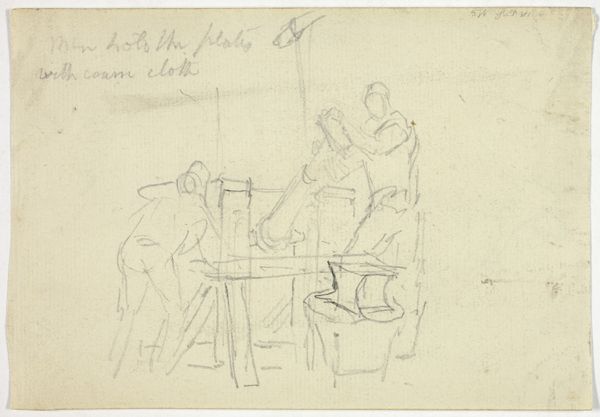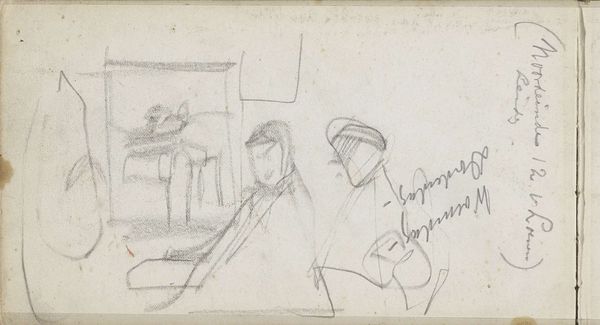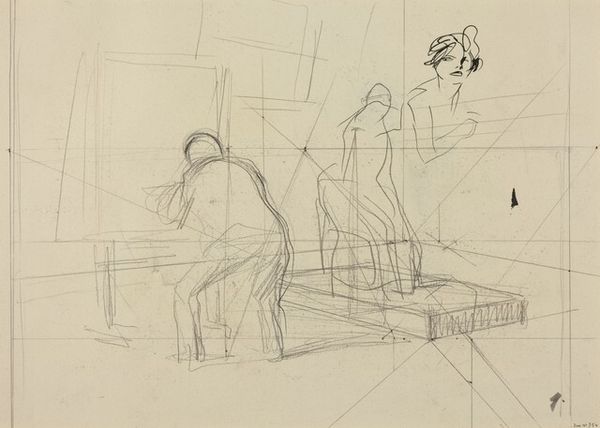
drawing, pencil
#
drawing
#
pen sketch
#
landscape
#
pencil
#
realism
Dimensions: height 320 mm, width 585 mm
Copyright: Rijks Museum: Open Domain
Curator: Before us, we have Anthon Gerhard Alexander van Rappard's "De steenfabriek," created sometime between 1868 and 1892 using pencil and pen on paper. Editor: The scene is instantly familiar yet haunting, a flurry of pencil marks capturing something about daily toil. Is that resignation or determination etched into those sketched lines? I’m intrigued. Curator: Rappard’s realism really shines through here. The subject matter, a brick factory, speaks volumes about the changing industrial landscape. The repetitive nature of brickmaking mirrors the artist's choice of repetitive lines. Editor: Absolutely. It’s as if the visual field mirrors that relentless, soul-crushing labour, each line piling upon the next to trap its subjects inside the work-a-day world. But there is an aesthetic elegance in that pattern-making, the factory itself as a symbol of productivity and forward momentum, even hope. Curator: Hope, perhaps. I think there is truth to that. The stoicism of the workers certainly comes across—and I feel, even, a shared humanity between the artist and subject. What symbols catch your eye in this sketch? Editor: For me, it’s the stacks of bricks, a visual rhyme with the posture of the workers: heavy, weighty, embodying physical and psychological labor, bearing their load. Yet they stand, suggesting resilience amid hardship. It asks a viewer to reckon with their place, as consumer, in this tableau of labour, demanding to know if its worth it. Curator: And Rappard, as a realist, invites that self-reflection by showing the unvarnished truth of industrial labour and those left to carry it out day after day. Editor: Indeed. This understated sketch reveals how enduring our human dance with productivity truly is, echoing from the nineteenth century to our present anxieties about purpose, craft, and connection.
Comments
No comments
Be the first to comment and join the conversation on the ultimate creative platform.

